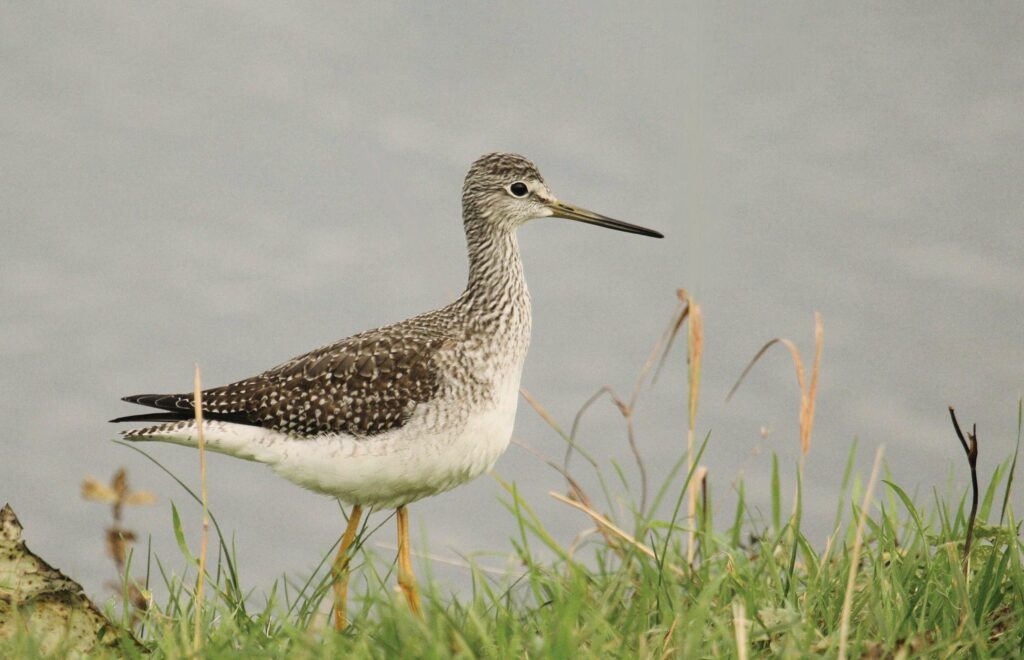VAGRANT SPECIES DIARY
Greater yellowlegs, Waterford

THE DISCOVERY OF A GREATER YELLOWLEGS in December 2022, 20km inland on the River Bride in County Waterford, Ireland (and still present in late January), must have made someone’s day. To see this shorebird isn’t so difficult these days with sightings well publicised, but to be responsible for the initial discovery and identification makes for a special treat – it may represent a once-in-a-lifetime achievement for a dedicated birder checking their local patch.
Greater yellowlegs is a North American wading bird related to our redshank and greenshank and has made landfall in Northwest Europe on only a few dozen occasions, though the December sighting was the second Irish record of 2022. Very similar to the more regularly occurring lesser yellowlegs from the same region, it is one of several vagrant Nearctic waders that turn up mainly during the autumn, with some, like this Irish individual, overwintering.
The post-breeding migration route of these species is typically southeast over the Atlantic to South America, often via the Caribbean, so they are well suited to long oceanic crossings, departing with full fat reserves. Those that cross the Atlantic eastwards by mistake are therefore likely to show a higher survival rate than their less well-adapted songbird cousins (American wood warblers, for example), which typically follow more overland routes where they can feed and rest regularly.
A general westerly airflow may be all that is needed to help a North American wader on the wrong orientation, but less well-adapted birds may require more specific conditions, such as a fast-moving weather system tracking east with an associated warm front, to survive such a long crossing.